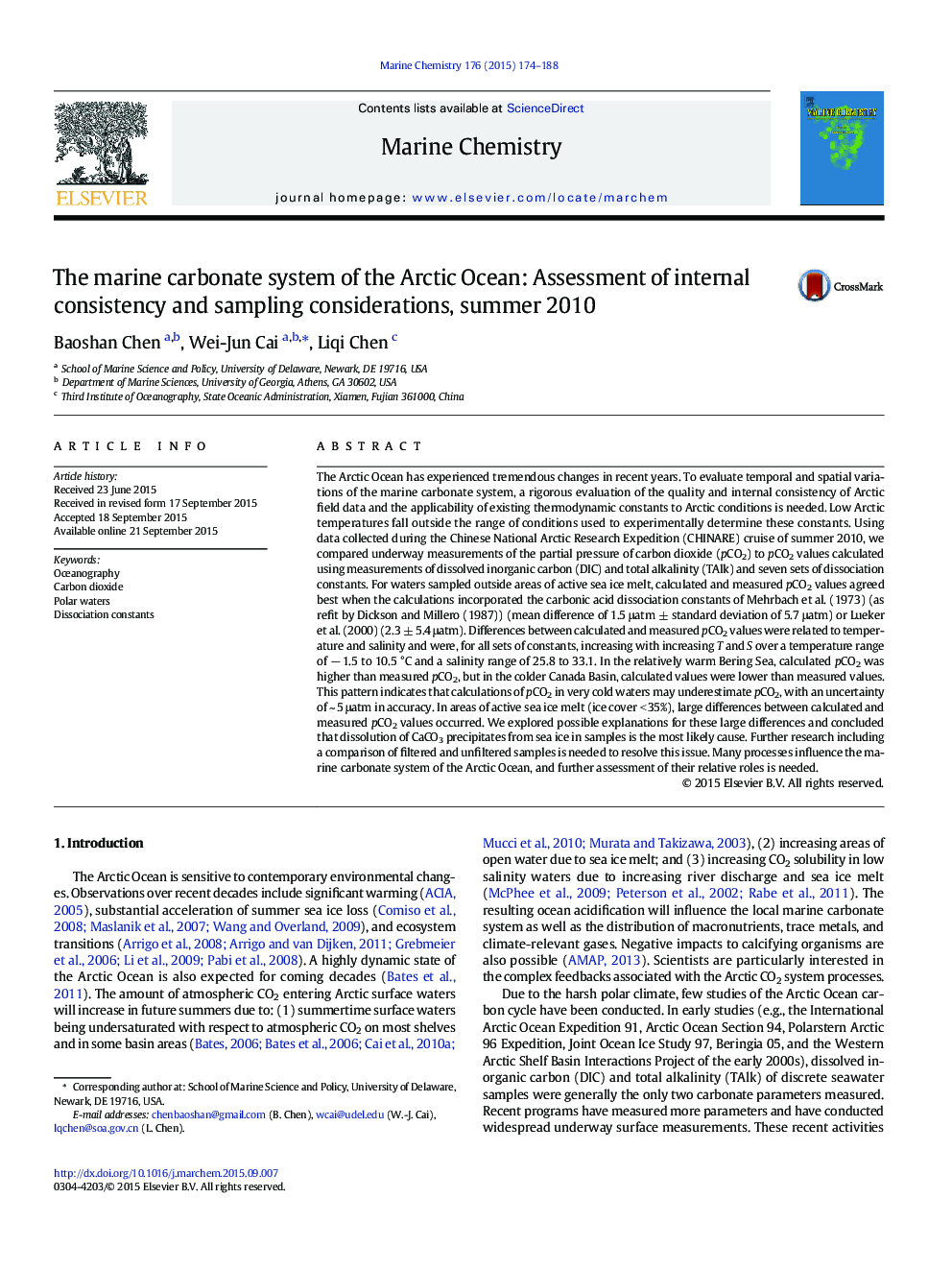| کد مقاله | کد نشریه | سال انتشار | مقاله انگلیسی | نسخه تمام متن |
|---|---|---|---|---|
| 7699268 | 1496659 | 2015 | 15 صفحه PDF | دانلود رایگان |
عنوان انگلیسی مقاله ISI
The marine carbonate system of the Arctic Ocean: Assessment of internal consistency and sampling considerations, summer 2010
ترجمه فارسی عنوان
سیستم کربنات دریایی اقیانوس اطلس: ارزیابی سازگاری داخلی و ملاحظات نمونه گیری، تابستان 2010
دانلود مقاله + سفارش ترجمه
دانلود مقاله ISI انگلیسی
رایگان برای ایرانیان
کلمات کلیدی
اقیانوس شناسی دی اکسید کربن، آبهای قطبی، دائمی تجزیه،
موضوعات مرتبط
مهندسی و علوم پایه
شیمی
شیمی (عمومی)
چکیده انگلیسی
The Arctic Ocean has experienced tremendous changes in recent years. To evaluate temporal and spatial variations of the marine carbonate system, a rigorous evaluation of the quality and internal consistency of Arctic field data and the applicability of existing thermodynamic constants to Arctic conditions is needed. Low Arctic temperatures fall outside the range of conditions used to experimentally determine these constants. Using data collected during the Chinese National Arctic Research Expedition (CHINARE) cruise of summer 2010, we compared underway measurements of the partial pressure of carbon dioxide (pCO2) to pCO2 values calculated using measurements of dissolved inorganic carbon (DIC) and total alkalinity (TAlk) and seven sets of dissociation constants. For waters sampled outside areas of active sea ice melt, calculated and measured pCO2 values agreed best when the calculations incorporated the carbonic acid dissociation constants of Mehrbach et al. (1973) (as refit by Dickson and Millero (1987)) (mean difference of 1.5 μatm ± standard deviation of 5.7 μatm) or Lueker et al. (2000) (2.3 ± 5.4 μatm). Differences between calculated and measured pCO2 values were related to temperature and salinity and were, for all sets of constants, increasing with increasing T and S over a temperature range of â 1.5 to 10.5 °C and a salinity range of 25.8 to 33.1. In the relatively warm Bering Sea, calculated pCO2 was higher than measured pCO2, but in the colder Canada Basin, calculated values were lower than measured values. This pattern indicates that calculations of pCO2 in very cold waters may underestimate pCO2, with an uncertainty of ~ 5 μatm in accuracy. In areas of active sea ice melt (ice cover < 35%), large differences between calculated and measured pCO2 values occurred. We explored possible explanations for these large differences and concluded that dissolution of CaCO3 precipitates from sea ice in samples is the most likely cause. Further research including a comparison of filtered and unfiltered samples is needed to resolve this issue. Many processes influence the marine carbonate system of the Arctic Ocean, and further assessment of their relative roles is needed.
ناشر
Database: Elsevier - ScienceDirect (ساینس دایرکت)
Journal: Marine Chemistry - Volume 176, 20 November 2015, Pages 174-188
Journal: Marine Chemistry - Volume 176, 20 November 2015, Pages 174-188
نویسندگان
Baoshan Chen, Wei-Jun Cai, Liqi Chen,
